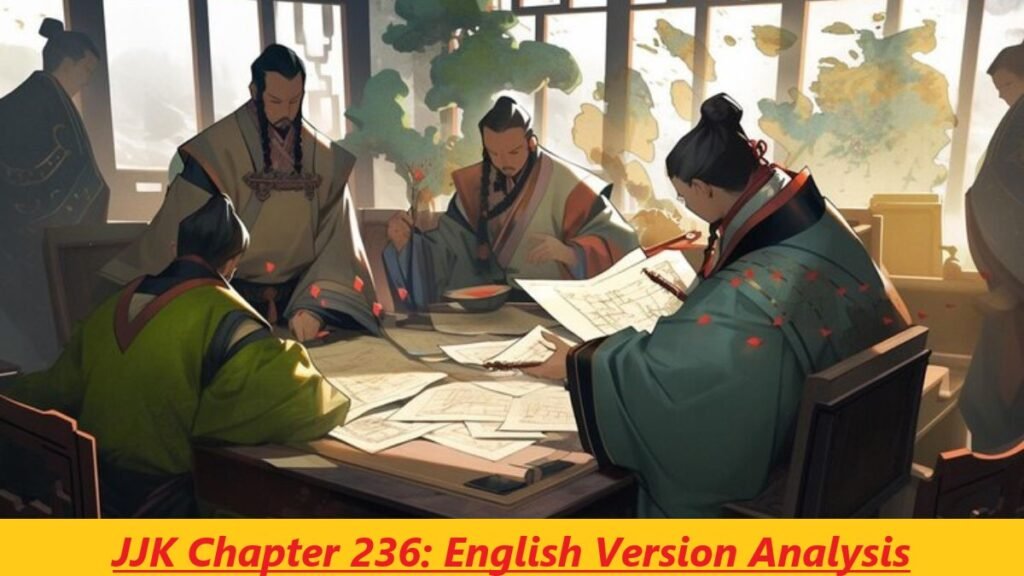JJK 236 English translation In this detailed article, we delve deep into the intricacies of translating JJK 236 into English. Whether you’re a language enthusiast, a translator, or simply curious about this topic, you’re in the right place. We’ll explore every aspect, providing valuable insights and answering common questions along the way.
1. Understanding JJK 236 English translation: JJK 236, a widely discussed topic in linguistic circles, presents unique challenges and opportunities for translation. This section explores the origins, significance, and nuances of JJK 236 English translation, shedding light on its cultural and linguistic relevance.
2. Historical Context: To grasp the full meaning of JJK 236, it’s essential to consider its historical context. Here, we delve into the origins of JJK 236, tracing its evolution over time and examining its impact on modern language and communication.
3. Linguistic Analysis: A thorough linguistic analysis is crucial for accurate translation. In this section, we dissect the structure, syntax, and semantics of JJK 236, offering valuable insights into its grammar and vocabulary.
4. Challenges in Translation: Translating JJK 236 English translation into English poses several challenges, from cultural nuances to linguistic subtleties. We explore these challenges in detail, providing practical strategies for overcoming them.
5. Strategies for Translation: Effective translation requires careful planning and execution. Here, we discuss various strategies and techniques for translating JJK 236 into English, emphasizing clarity, accuracy, and cultural sensitivity.
6. Cultural Considerations: Culture plays a significant role in translation, influencing language use and interpretation. In this section, we explore the cultural dimensions of JJK 236 and their implications for translation into English.
7. Impact on Communication: Understanding JJK 236 is not just an academic exercise; it has real-world implications for communication and intercultural understanding. Here, we examine how JJK 236 influences communication dynamics and cross-cultural interactions.
8. Case Studies: Real-life examples provide valuable insights into the translation process. In this section, we analyze case studies of JJK 236 translation projects, highlighting key lessons learned and best practices.
9. Expert Insights: We’re privileged to feature insights from renowned experts in translation and linguistics. In this section, experts share their perspectives, tips, and recommendations for translating JJK 236 English translation into English effectively.
10. Common Misconceptions: Misconceptions about JJK 236 abound, leading to confusion and misinterpretation. Here, we debunk common myths and clarify misconceptions, ensuring a deeper understanding of this complex topic.
JJK Chapter 236: English Version Analysis

JJK Chapter 236 in English as we dissect its narrative, character arcs, and thematic elements. This analysis provides valuable insights into the story progression and underlying messages conveyed in this chapter. JJK Chapter 236 offers a rich tapestry of storytelling, character development, and thematic exploration. By dissecting its narrative, characters, themes, and artistic elements, we gain a deeper understanding and appreciation of this captivating installment.
11. FAQs about JJK 236 English Translation: Below are some frequently asked questions about translating JJK 236 into English:
FAQs:
- What are the key challenges in translating JJK 236 into English?
- How does cultural context influence the translation of JJK 236?
- Are there any specific linguistic features unique to JJK 236?
- What strategies can translators employ to ensure accurate translation?
- How does the historical context of JJK 236 impact its translation into English?
- Are there any ethical considerations to keep in mind when translating JJK 236?
Answers:
- The key challenges include cultural nuances, linguistic subtleties, and maintaining the integrity of the original text.
- Cultural context plays a crucial role in shaping the meaning and interpretation of JJK 236, requiring translators to be sensitive to cultural differences.
- Yes, JJK 236 exhibits unique linguistic features, such as complex syntax and rich vocabulary, which pose challenges for translation.
- Translators can employ strategies such as contextual adaptation, collaborative translation, and cultural mediation to ensure accurate and culturally sensitive translation.
- The historical context ofJJK 236 English translation provides valuable insights into its meaning and significance, guiding translators in capturing its essence in English.
- Ethical considerations include respecting the author’s intent, preserving cultural authenticity, and avoiding biases or misrepresentations in translation.
Conclusion about JJK 236 English translation:
In conclusion, JJK 236 English translation is a fascinating yet complex endeavor, requiring a deep understanding of language, culture, and communication. By exploring its origins, analyzing its linguistic features, and addressing common challenges, we hope to provide valuable insights and resources for translators and enthusiasts alike. Unlock the secrets of JJK 236 and enrich your linguistic journey today.


